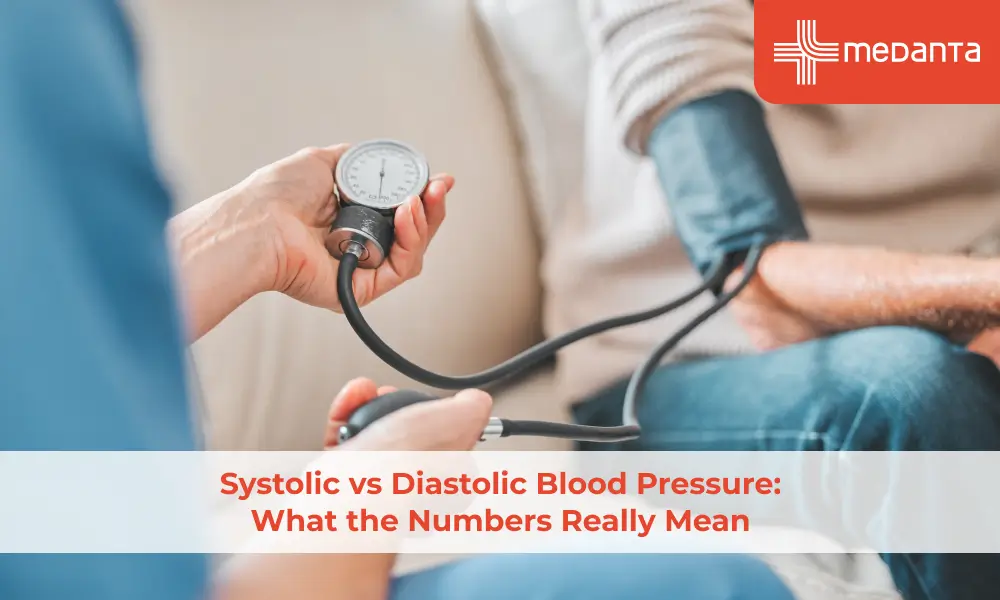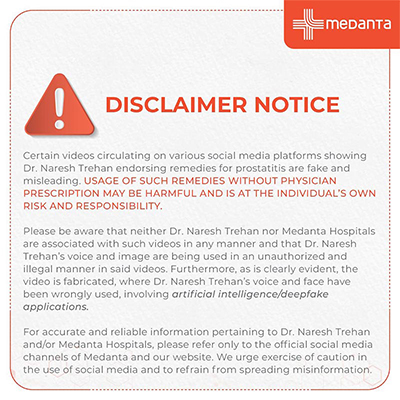Systolic vs Diastolic Blood Pressure: What the Numbers Really Mean

TABLE OF CONTENTS
Blood pressure affects nearly 40%-50% of the total population. These systolic and diastolic blood pressure readings are significant health indicators that everyone needs to understand. Many people don't understand what these numbers really mean as their doctor reads them during checkups.
The change in blood pressure risks is especially high for older adults. People aged 60 or older face a stark reality - more than 70% have hypertension. People can monitor their cardiovascular health better by understanding both numbers.
This article explains systolic and diastolic pressure in simple terms. You'll find what makes each type rise, what healthy readings look like, and practical ways to keep your blood pressure at ideal levels naturally.
What Is Blood Pressure and Why Does It Matter
Blood pressure shows how much force your blood creates against your artery walls. Healthcare professionals use this vital sign to review your overall health. Blood pressure readings always show two numbers. The top number (systolic) measures the force as your heart pumps blood. The bottom figure (diastolic) shows pressure while your heart rests between beats. Your BP reading appears as two numbers with a slash between them (like 120/80 mmHg), measured in millimetres of mercury (mmHg). Normal blood pressure stays under 120/80 mmHg according to the American College of Cardiology. Any readings above this threshold might signal health concerns that need attention.
Understanding the Systolic Reading
The top number represents your systolic pressure - the force inside your arteries when your heart squeezes blood out. This measurement shows how hard your heart works with each beat. Your systolic number tends to climb as you age because blood vessels become weaker and narrower.
Understanding the Diastolic Reading
The bottom number displays your diastolic pressure, which doctors measure between heartbeats while your heart fills with blood. This reading reveals how much resistance your arteries create during your heart's rest period. People over 50 often see their diastolic pressure drop as their arteries lose elasticity.
Why the Difference Between the Two Matters
These numbers together paint a picture of your cardiovascular health. Doctors call the gap between systolic and diastolic readings "pulse pressure". This helps them spot specific heart conditions. Your systolic reading becomes more important than diastolic values for heart disease risk after age 50.
Normal vs High Readings: What's Safe?
Blood pressure classifications include:
Normal: Less than 120/80 mmHg
Elevated: 120-129 systolic and less than 80 diastolic
Stage 1 Hypertension: 130-139 systolic or 80-89 diastolic
Stage 2 Hypertension: 140+ systolic or 90+ diastolic
Hypertensive Crisis: Above 180/120 mmHg – requires immediate medical attention
What Causes Spikes in Each Type
Your blood pressure might jump temporarily from stress, caffeine, medications, or exercise. Other factors include:
Smoking
Excess weight
Eating too much salt
Health issues like sleep apnea or kidney disease
Stiff arteries mainly affect systolic readings, while increased resistance in smaller blood vessels typically impacts diastolic numbers.
Natural Ways to Maintain Healthy Blood Pressure
Good news - you don't always need medication to control your systolic and diastolic blood pressure. Studies show that simple lifestyle changes work just as well as medication for many people.
Clinical trials have shown that the DASH (Dietary Approaches to Stop Hypertension) diet can lower systolic blood pressure by 12 mm Hg. This eating plan focuses on:
Fruits, vegetables and whole grains
Low-fat dairy products and lean proteins
Limited salt, added sugars and saturated fats
Your daily exercise plays a crucial role. A simple 30-minute walk each day can reduce your readings. Regular exercise helps your heart pump blood more efficiently.
Here are some other ways that effectively lower your blood pressure:
Reducing your daily salt intake to less than 1,500 mg can lower systolic pressure by 5-6 mm Hg.
Quality sleep makes a big difference since poor sleep directly affects your blood pressure control.
Stress management through breathing exercises, meditation or yoga can help reduce your arteries' stiffness.
You should limit alcohol consumption (men should have no more than two drinks daily, women no more than one).
Quitting smoking also helps.
Regular blood pressure monitoring at home lets you track progress and spot patterns that need attention.
Conclusion
Blood pressure readings tell us two important things about our heart's health. The top number shows how hard the heart works as it beats, and the bottom number reveals the pressure at the time it rests. These two readings work together to paint a picture of your cardiovascular health.
These numbers give you the ability to take control of your health. The readings at your doctor's office will make more sense now - 120/80 mmHg marks where normal blood pressure ends and high blood pressure begins. Higher readings need attention since high blood pressure affects almost half of all people.
Nature offers many ways to keep these numbers healthy. The DASH eating plan helps many people effectively, sometimes working as well as medication. Regular walks can strengthen your heart without fancy equipment or complex exercises. Better weight control, lower stress levels, and good sleep habits also lead to improved readings.
Your blood pressure isn't just something for doctors to monitor - it's a vital sign you can influence each day. Simple changes often create better results. Reducing salt intake today leads to improved numbers tomorrow. Your heart never stops working, so understanding how to support it becomes one of the best gifts you can give yourself.
FAQs
What is the difference between systolic and diastolic blood pressure?
Blood pressure readings show two different measurements. The systolic pressure (top number) shows how hard your blood pushes against artery walls when your heart beats. The diastolic pressure (bottom number) tells you the pressure in your arteries while your heart rests between beats. These two numbers make up your blood pressure reading, which doctors write as systolic/diastolic (like 120/80 mmHg).
Which is more dangerous: high systolic or high diastolic?
Both numbers are important, but research shows systolic pressure creates bigger risks, especially for people over 50. Studies link high systolic readings to cardiovascular disease more strongly than diastolic numbers.
What causes high systolic blood pressure?
Your systolic pressure usually goes up as you get older because your arteries become stiffer and less flexible. Here's what else can cause it:
Stiff arteries from calcium buildup and structural changes
More collagen than elastin in artery walls
Inflammation that damages the blood vessel lining
Too much salt in your diet
Extra weight and not enough exercise
What should your systolic and diastolic numbers be?
Your blood pressure should stay below 120/80 mmHg. Here's how doctors classify the readings:
Normal: Below 120/80 mmHg
Elevated: 120-129 systolic and below 80 diastolic
Stage 1 Hypertension: 130-139 systolic or 80-89 diastolic
Stage 2 Hypertension: 140+ systolic or 90+ diastolic
Hypertensive Crisis: Above 180/120 mmHg – you need medical help right away
Can you have high diastolic pressure only?
Yes. Doctors call this isolated diastolic hypertension (IDH). It happens when your diastolic reading goes above 80 mmHg while your systolic stays normal. Young adults get IDH more often. The causes can be serious: changes in blood vessel structure, thyroid problems, kidney disease, and sleep apnea.
Why are my systolic and diastolic numbers far apart?
This gap, called pulse pressure, should be between 40-60 mmHg. A bigger gap usually means your arteries are getting stiff. As you age, your systolic number tends to climb while diastolic drops, which makes this gap wider. People over 50 often see their pulse pressure increase because their less elastic arteries can't handle blood flow surges well.
How can I lower my systolic and diastolic blood pressure naturally?
These natural methods work well:
Eat the DASH way with lots of fruits, vegetables, and whole grains
Keep salt under 1.5g each day
Stay at a healthy weight
Exercise 30-60 minutes daily
Learn to handle stress better
Drink less alcohol
Stop smoking
Are systolic and diastolic readings affected by age?
Yes, your blood pressure changes as you age. Until about age 50, both numbers usually rise together. After that, systolic keeps going up while diastolic starts falling. Your arteries get stiffer as you age, and that's why high systolic blood pressure becomes so common in people over 70.






